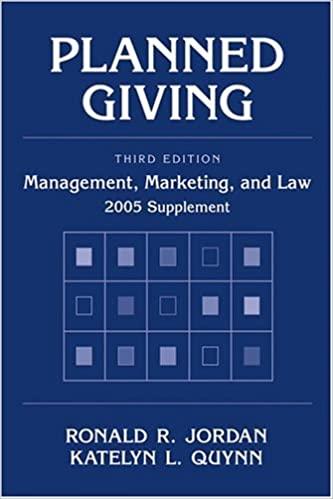Question
QUESTIONS Each problem is of equal value. Each part of a problem is equal. Problem 1. A project in its 26 th week has an
QUESTIONS
Each problem is of equal value. Each part of a problem is equal.
Problem 1.A project in its 26th week has an actual cost of $300,000. It was scheduled to have completed $325,000worth of work at that point in the project. For the work performed to date, the budgeted value is $350,000. The project has a total budget of $500,000. What are the cost and schedule variances for the project? What are the Schedule Performance Index and Cost Performance Index? Assuming that both schedule and cost variances will affect the remaining work, what is the Estimate At Completion?
Problem 2.A project has just completed its 87th item in the project plan. It was scheduled to have spent $300,000at this point in the plan but has actually spent only $250,000. The project manager estimates that the value of the work actually finished is nearly $200,000. What are the spending and schedule variances for the project? What are the Schedule Performance Index and Cost Performance Index? What is the Critical Ratio?
Problem 3. Solve the following Case:
Stoneworth Paving Company specializes in highway paving jobs for the state of Virginia. When the State first awarded Stoneworth the contract, they stipulated a 1% penalty for each week Stoneworth was late on a completion date. Preston Flintrock, the project coordinator for Stoneworth, began to notice that the last two jobs were three weeks late, and the paving job that was due to be completed in the next two weeks was behind schedule. When Preston investigated the field, he found the job understaffed, supplier delays, and a high work rejection/repaving needed. As a result, Preston decided to establish a better project control system and present it to the boss.
- What characteristics could be looked for in a new control system? Explain
- Will a new control system be adequate for the problem? Explain
Problem 4. The following project is at the end of its 6th week. Find the cost and schedule variances. Also find the Cost Performance Index and Schedule Performance Index. Then find the critical ratio of the project using earned value calculations. Finally, calculate the Estimate At Completion for the project by at least two different methods.
| Activity | Predecessor | Duration (wks) | Budget ($) | Actual Cost ($) | %Complete |
| a | - | 2 | 600 | 400 | 100 |
| b | - | 3 | 150 | 180 | 100 |
| c | a | 2 | 250 | 300 | 100 |
| d | a | 5 | 500 | 400 | 20 |
| e | b, c | 4 | 400 | 200 | 20 |
Step by Step Solution
There are 3 Steps involved in it
Step: 1

Get Instant Access to Expert-Tailored Solutions
See step-by-step solutions with expert insights and AI powered tools for academic success
Step: 2

Step: 3

Ace Your Homework with AI
Get the answers you need in no time with our AI-driven, step-by-step assistance
Get Started


